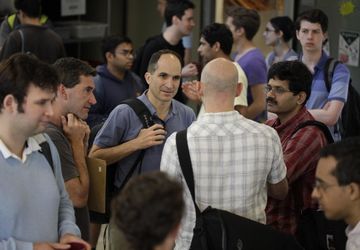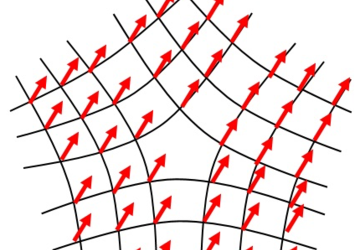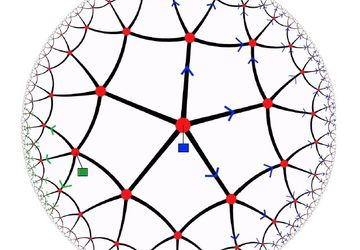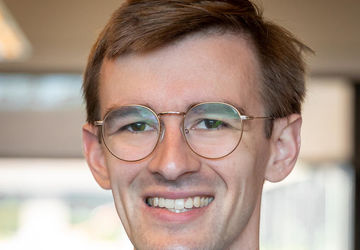Quantum Information
One of the defining features of quantum mechanics is the Heisenberg Uncertainty Principle, which imposes unbreakable limits on our knowledge of reality. Despite these restrictions, quantum mechanical particles can do amazing things like exist at two different locations at the same time. Quantum information science aims to explore the nature of information at the quantum level, a world in which bits can be both zero and one at the same time and perfect copying is impossible.
At the practical level, quantum information powers forms of secure communication that are provably impossible in a “classical” world. Likewise, an intrinsically quantum-mechanical computer could efficiently solve problems that are intractable for any computer of more traditional design, the most notorious example being that a quantum computer could crack most of the codes used to secure the internet.
Quantum information researchers at SITP have played an important role in the development of the basic theory of quantum communication. They continue to search for better ways to protect quantum computers from noise and communications from prying eavesdroppers. A unique feature of the quantum information group at SITP, however, is its close integration and participation in research on quantum gravity and black holes. Stanford is at the forefront of exploring the role of quantum entanglement to the geometry of space, the importance of quantum error correction in black hole evaporation, and even the relevance of computational complexity to stability of space.
Video Briefs
Sandu Popescu discusses multipartite entanglement with the It From Qubit Simons…
Brian Swingle of the Stanford Institute for Theoretical Physics discusses the latest research in…
ER = EPR is a shorthand that joins two ideas proposed by Einstein in 1935. One involved…
Related News

Researchers chat during a coffee break at the It From Qubit summer school
Photo: JB Park, Perimeter Institute
The first It From Qubit collaboration workshop and summer school was held at the Perimeter Institute in Waterloo, Canada in July, 2016…

Tensor networks provide toy models which explicitly realize many puzzling features of AdS/CFT correspondence, and…

The Simons Foundation is pleased to announce the establishment of two Simons Collaborations in Mathematics and the Physical Sciences:…
Related Events

One hundred years after Heisenberg’s Uncertainty Principle, the question of how to make simultaneous measurements of noncommuting observables lingers. I will survey one hundred years of measurement theory, which brings us to the point where…
When Shannon formulated his groundbreaking theory of information in 1948, he did not know what to call its central quantity, a measure of uncertainty. It was von Neumann who recognized Shannon’s formula from statistical physics and suggested the…

Out of time ordered correlators(OTOC) in certain large N systems can be described by scramblon modes. In large N limit, scramblon exchange dominates, while scramblon interactions are suppressed by 1/N. However, we are going to discuss certain…

In this talk I will present recent results about the computational complexity of determining homology groups of simplicial complexes, a fundamental task in computational topology. In arXiv:2209.11793 we showed that this decision problem is QMA1-…
Professor Patrick Hayden of the Stanford Institute for Theoretical Physics (SITP) introduces the science of quantum information.
Over the past sixty years, computers have shrunk, networks have spread and flickering bits of information…
Professor Patrick Hayden of the Stanford Institute for Theoretical Physics (SITP) introduces the science of quantum information.
Over the past sixty years, computers have shrunk, networks have spread and flickering bits of information…

I will introduce a critical string theory in two dimensions and explain that this theory, viewed as two-dimensional quantum gravity on the worldsheet, admits an equivalent holographic description in terms of a double-scaled matrix integral. The…

The Bekenstein bound posits a maximum entropy for matter with finite energy confined to a spacetime region. It is often interpreted as a fundamental limit on the information that can be stored by physical objects. In this work, we test this…